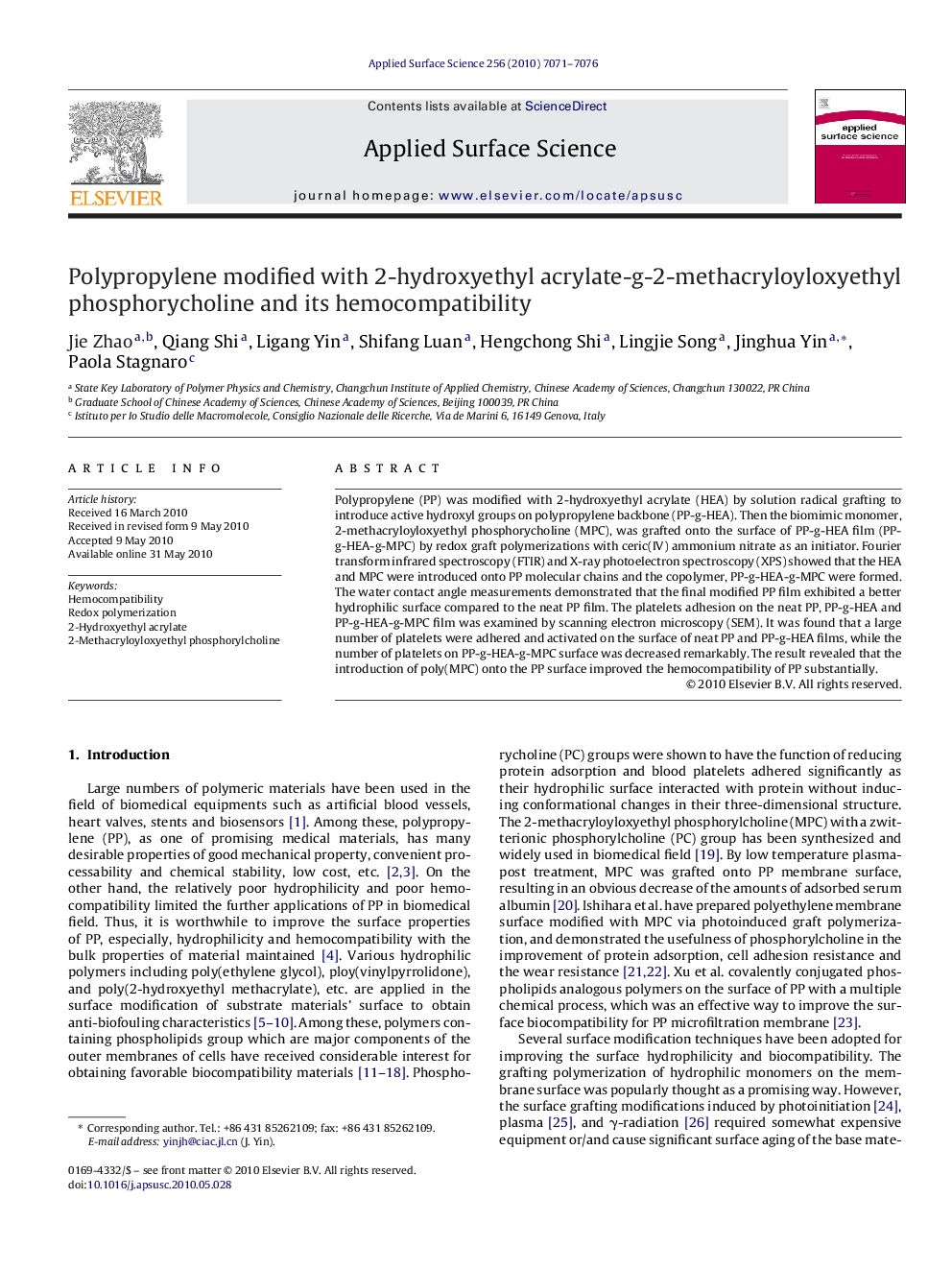| Article ID | Journal | Published Year | Pages | File Type |
|---|---|---|---|---|
| 5357285 | Applied Surface Science | 2010 | 6 Pages |
Abstract
Polypropylene (PP) was modified with 2-hydroxyethyl acrylate (HEA) by solution radical grafting to introduce active hydroxyl groups on polypropylene backbone (PP-g-HEA). Then the biomimic monomer, 2-methacryloyloxyethyl phosphorycholine (MPC), was grafted onto the surface of PP-g-HEA film (PP-g-HEA-g-MPC) by redox graft polymerizations with ceric(IV) ammonium nitrate as an initiator. Fourier transform infrared spectroscopy (FTIR) and X-ray photoelectron spectroscopy (XPS) showed that the HEA and MPC were introduced onto PP molecular chains and the copolymer, PP-g-HEA-g-MPC were formed. The water contact angle measurements demonstrated that the final modified PP film exhibited a better hydrophilic surface compared to the neat PP film. The platelets adhesion on the neat PP, PP-g-HEA and PP-g-HEA-g-MPC film was examined by scanning electron microscopy (SEM). It was found that a large number of platelets were adhered and activated on the surface of neat PP and PP-g-HEA films, while the number of platelets on PP-g-HEA-g-MPC surface was decreased remarkably. The result revealed that the introduction of poly(MPC) onto the PP surface improved the hemocompatibility of PP substantially.
Keywords
Related Topics
Physical Sciences and Engineering
Chemistry
Physical and Theoretical Chemistry
Authors
Jie Zhao, Qiang Shi, Ligang Yin, Shifang Luan, Hengchong Shi, Lingjie Song, Jinghua Yin, Paola Stagnaro,
